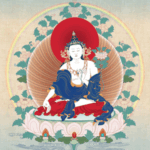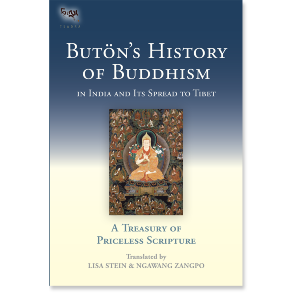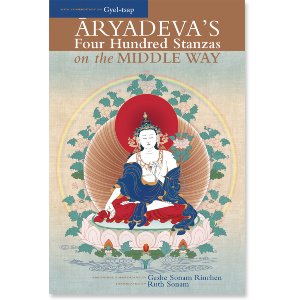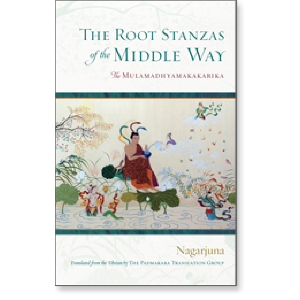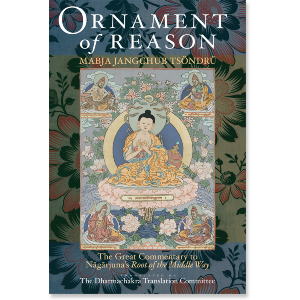Mahayana Buddhist philosophy
This article for the Great Masters Series focuses on Aryadeva, the second of what His Holiness the Dalai Lama refers to as the Seventeen Pandits of Nalanda, whose works form the foundation for Mahayana Buddhist philosophy.
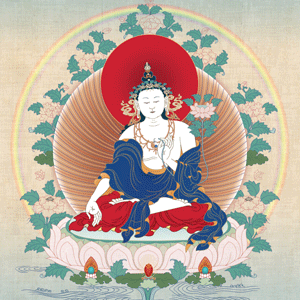 Birth and Training
Birth and Training
While early biographies vary in detail and timing, traditional accounts such as those by Taranatha, Butön in his History of Buddhism, and Chandrakirti identify Aryadeva as being born in Sri Lanka in a royal family in the late first or early second century C.E. He rejected the throne and took monastic ordination and mastered all the Tripitaka (Sutra, Vinaya, and Abhidharma) as well as non-Buddhist philosophical systems.
He then left to visit the holy sites of India, ending up in Pataliputra, present-day Patna in Bihar, where he became a direct disciple of Nagarjuna. He then accompanied him to Sri Parvata or Nagarjunakonda, the Buddhist center in Andhra Pradesh, now underwater. There, he studied with Nagarjuna and received tantric training, studying and meditating.
Later Aryadeva built two dozen monasteries in the area and served the dharma in many ways. Some identify him as being one and the same with Karnaripa, one of the 84 great Mahasiddhas of India, who lived off essences and eventually attained the rainbow body.
The Nalanda Period
After some time Aryadeva was invited to Nalanda to debate Matriceta, also known as Durdharsakala, a particularly troublesome non-Buddhist philosopher and magician.
In a famous story, on his way there, he came across a woman - some accounts say she was a tree goddess, others a tirthika - who asked him for one of his eyes, which he freely gave. Upon arriving in Nalanda, the monks asked him what had happened to his eye and he replied,
Shiva has three eyes yet cannot see the true nature of reality.
Shakra has one thousand eyes and likewise has never seen the true nature.
But Aryadeva, with his single eye,
Perceives the reality of all three planes of existence.
He debated Matriceta and defeated him three times by means of logic as well as the siddhis he had attained through tantric practice. An exciting blow-by-blow account of this debate is included in the introduction to Aryadeva's Four Hundred Stanzas. His opponent finally relented and took ordination, joining the ranks of the enlightenment factory of Nalanda.
He remained at Nalanda a long time, teaching, defeating other tirthikas, and authoring some of his works there.
Aryadeva's Works
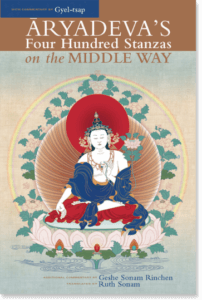
For Tibetans this is one of the most important Mahayana texts and is widely studied by all schools today, though of course interpretations vary. Some of the more well-known commentaries on the text are by Chandrakirti, Gyaltsab-Je, Khenpo Ngawang Pelzang, and Khenpo Shenga.
Generally Aryadeva's Four Hundred Verses is considered both a commentary on Nagarjuna's Root Verses on the Middle Way and a supplement to it in that it also includes a refutation of non-Buddhist systems and the paths of relative truth.
But what is important about the text by all accounts is that it is a means for practitioners to remove their misconceptions about how things really are, to gain an understanding of reality that can then lead to a direct experience of it, beyond conceptions and language. That is why this text matters so much and why it is still in constant use, in monasteries, shedras, classrooms, and dharma centers in the West.
Madhyamaka
Aryadeva is also the author of the Shatashastra or The Hundred Verses, which is no longer existant in its original Sanskrit or Tibetan, but is preserved in the Chinese tradition as one of the three most important works on Madhyamaka.
Mahayana and Vajrayana
Many other texts, Mahayana and Vajrayana, are attributed to Aryadeva, though there is debate among contemporary scholars, many of whom assume there were two Aryadevas, about which actually were authored by the same master who penned the Four Hundred Verses. One version of the Tibetan Kangyur lists a group of fifteen and another of nineteen texts by him, and since there is no overlap, the list could be counted as thirty-four. Many of these are no longer existant, and authorship will likely remain the subject of conjecture. Of particular note for English readers interested in the Vajrayana works is the translation of The Lamp That Integrates the Practices published by Columbia University Press in 2008.
Path to awakening
Regardless, the fact remains that Aryadeva's Four Hundred Stanzas is a major work that has helped many hundreds of thousands over the centuries on their path to awakening.
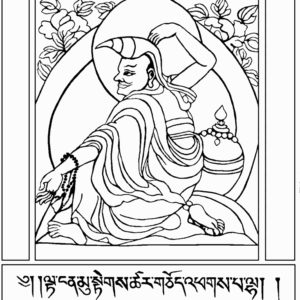 Aryadeva was a disciple of Nagarjuna and author of several important Madhyamaka Buddhist texts.
Aryadeva was a disciple of Nagarjuna and author of several important Madhyamaka Buddhist texts.
Related Books
Buton’s History of Buddhism in India and Its Spread to Tibet
$34.95 - Hardcover
Aryadeva's Four Hundred Stanzas on the Middle Way
$39.95 - Paperback
The Root Stanzas of the Middle Way
$29.95 - Hardcover
$54.95 - Hardcover

